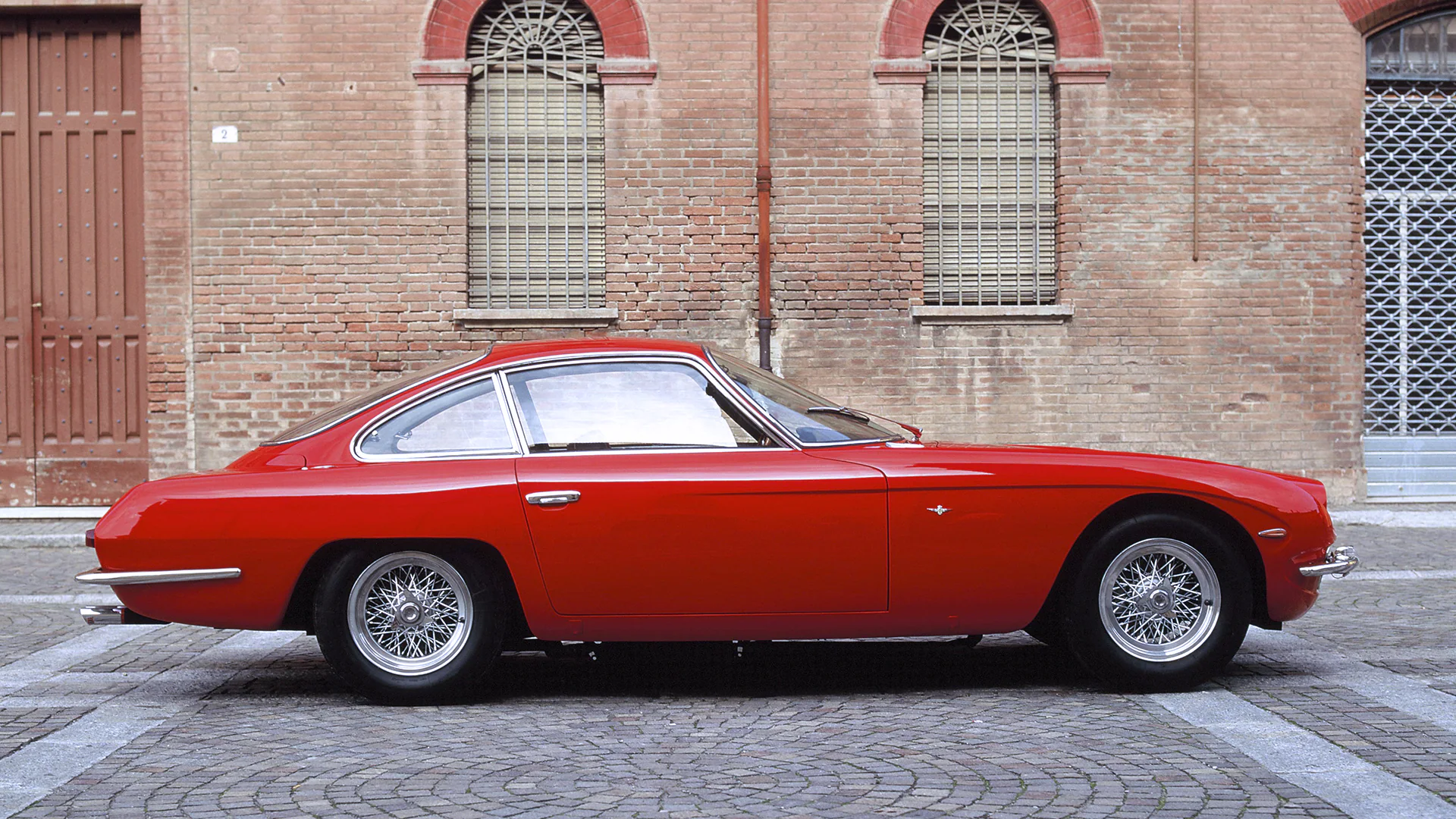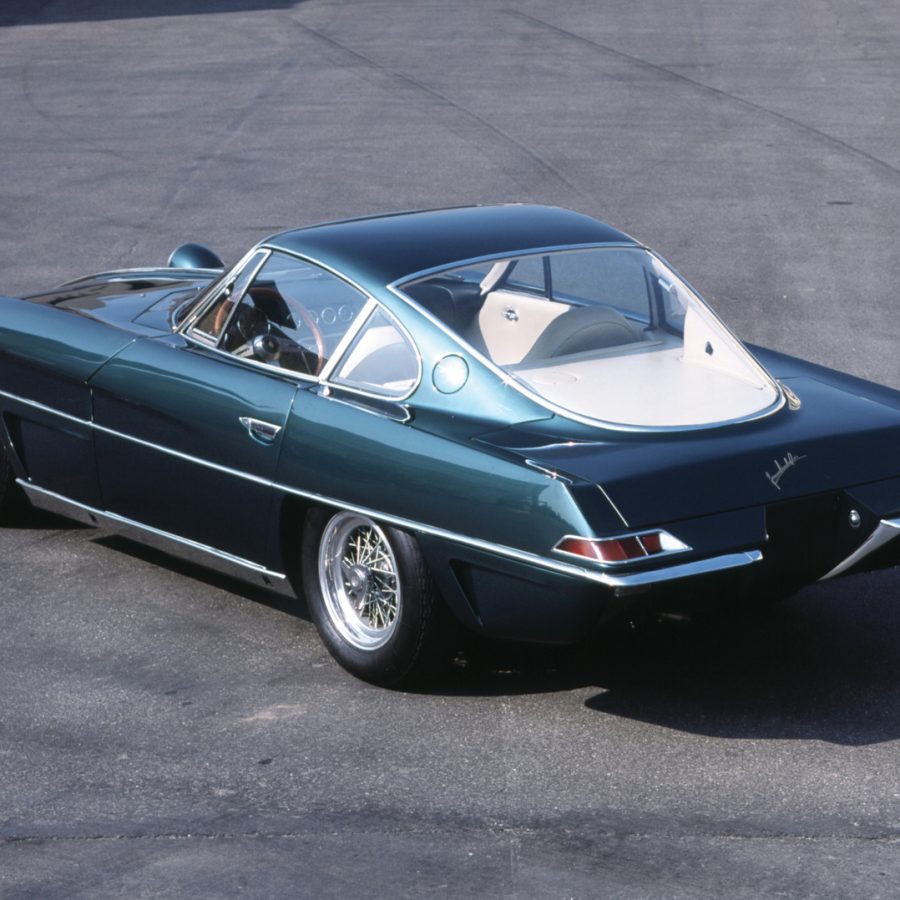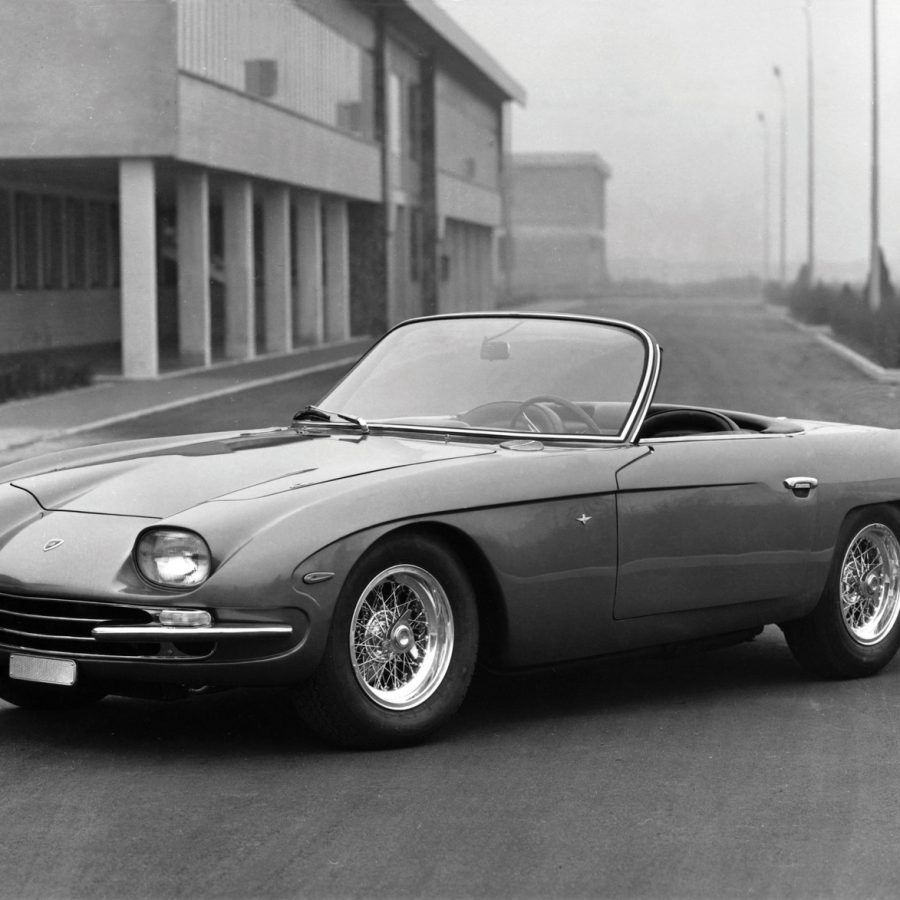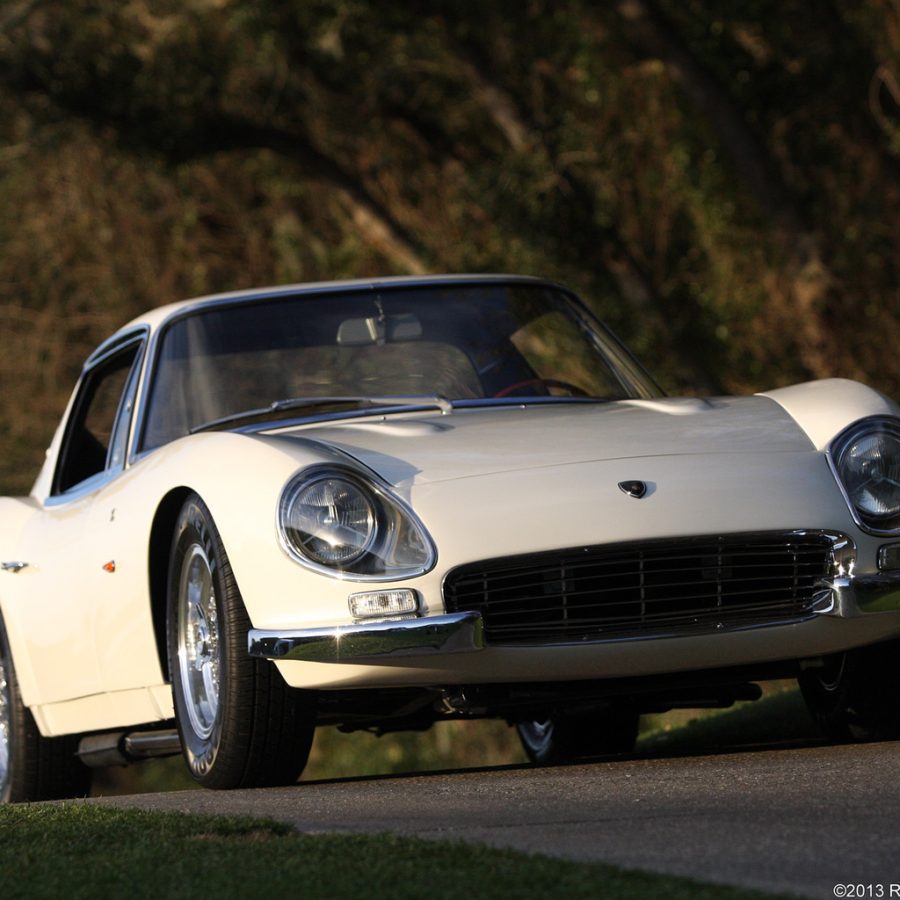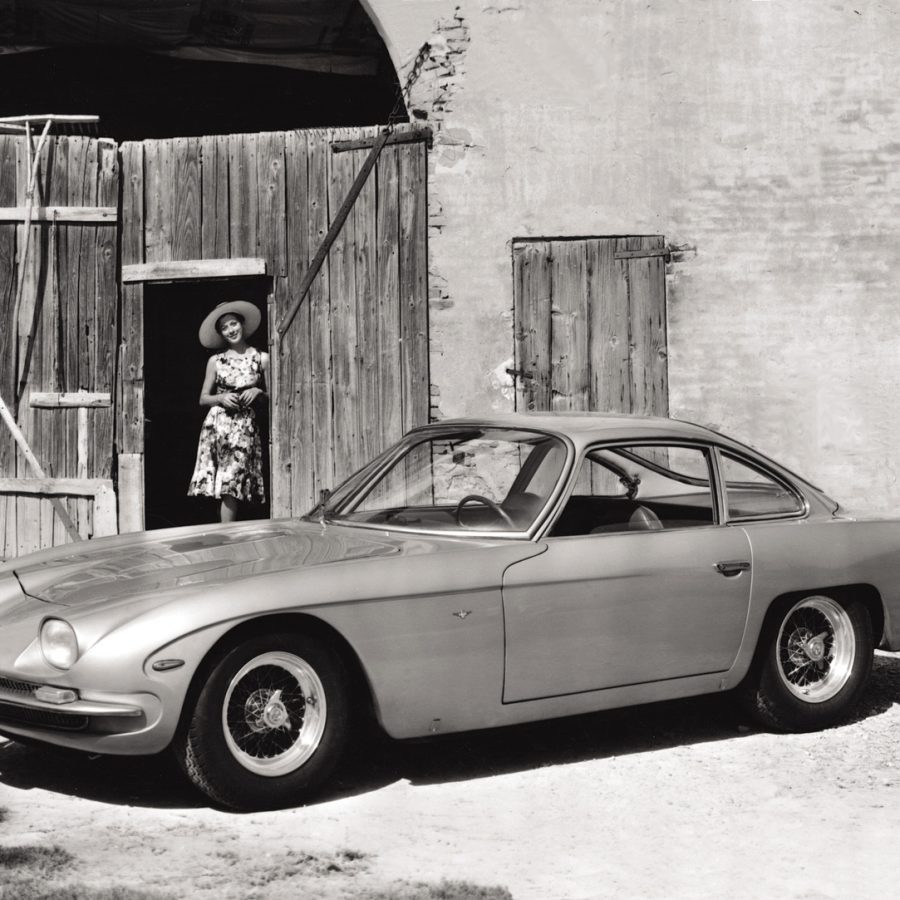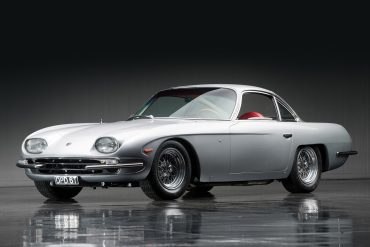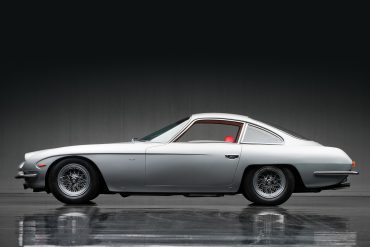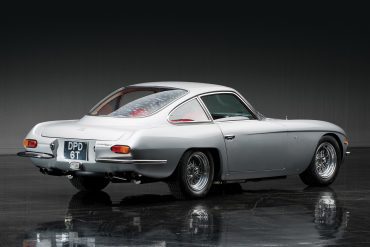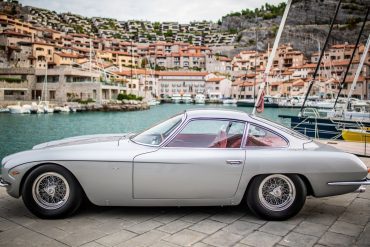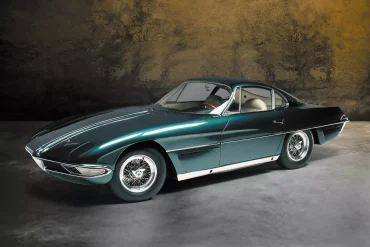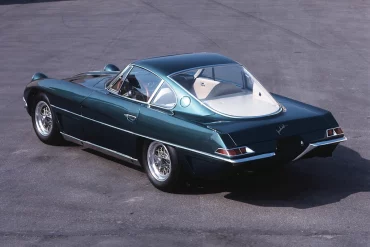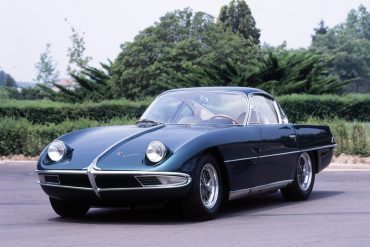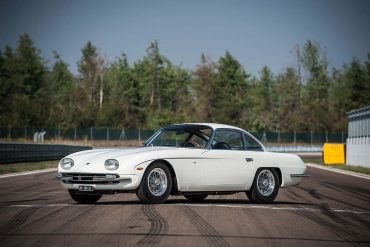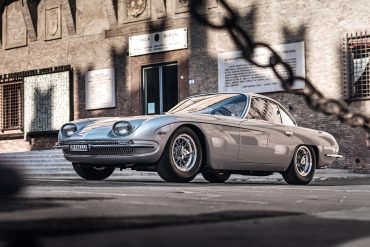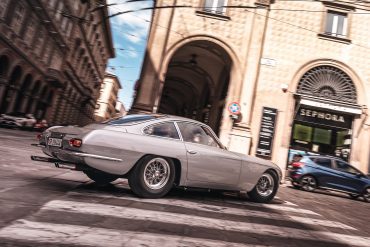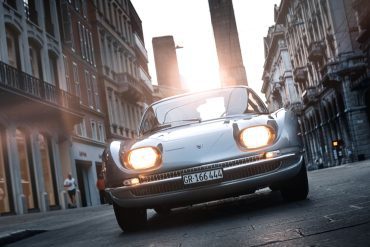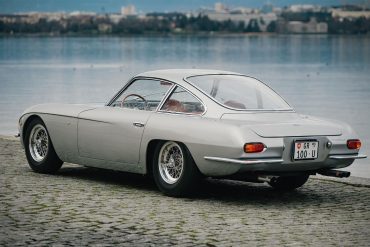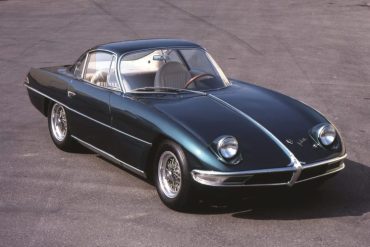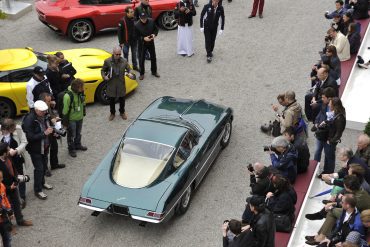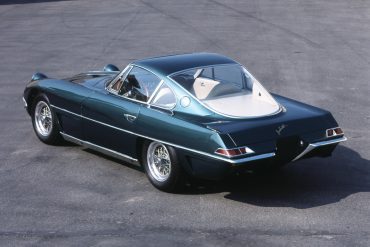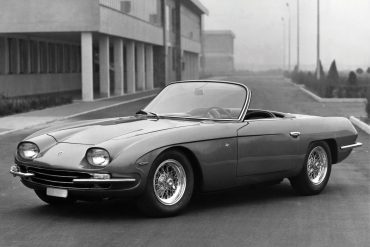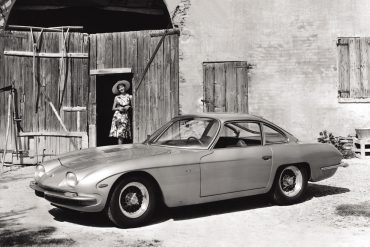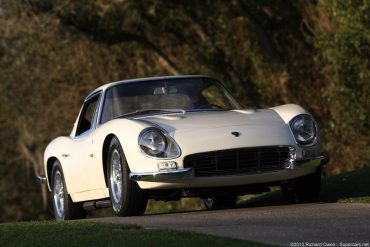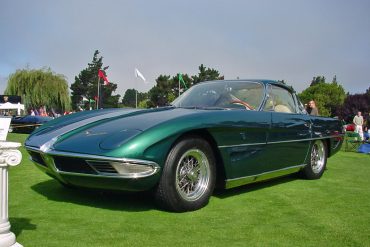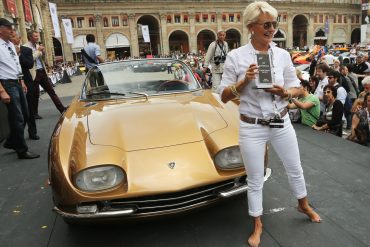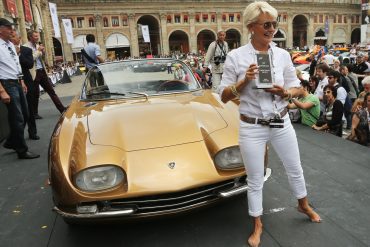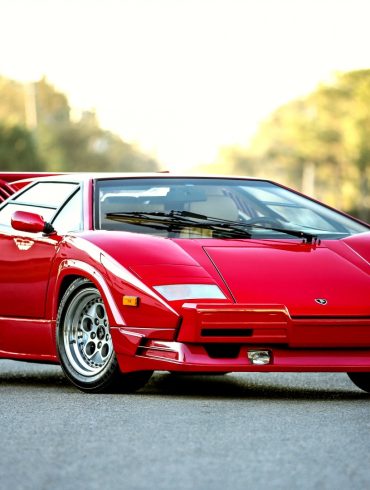Imagine showing up to a car show and a tractor manufacturer shows up with the sexiest car design you have ever seen. That's how things must have felt for consumers at the 1963 Turin Auto Show when they first saw the 350 GTV. A small group of men including Bizzarrini, Scaglione, Neri and Bonacini.
Lamborghini 350 GT
Where It All Began
1964 - 1966
This is where it all began. The 350 GTV prototype definitely got potential customers excited so Lamborghini decided to produce production cars as a result. The 350 GT introduced a more balanced design than the aggressive 350 GTV. The bodywork was enriched with aluminum inserts, independent suspension, four disc brakes and - on select units - limited-slip differential. Solid orders ensured the companies’ survival and paved the way for future models.
Overview / Featured / Variants / Models In-Depth / Specs / Image Gallery / More Updates
Overview
The story of Lamborghini's foray into the world of high-performance automobiles is nothing short of legendary, beginning with the inception of the Lamborghini 350 GT. This model wasn't just Lamborghini's first production vehicle; it was a statement, a bold declaration of intent to compete with the best in the luxury sports car market. Soon after, the 350 GT evolved into the convertible 350 GTS, adding an open-top thrill to the Lamborghini experience. This blog post celebrates the pioneering spirit of these two models, the 350 GT and the 350 GTS, exploring their creation, design, performance, and lasting impact on the Lamborghini legacy.
The Lamborghini 350 GT, unveiled at the 1964 Geneva Motor Show, was the fruit of Ferruccio Lamborghini's vision to create a grand tourer capable of challenging established marques. The project, codenamed 350 GTV, was transformed into the 350 GT, with the expertise of engineer Giotto Bizzarrini, designer Franco Scaglione, and coachbuilder Carrozzeria Touring. The collaboration resulted in a vehicle that was not only a marvel of engineering but also a masterpiece of design, embodying elegance, power, and innovation.
The Lamborghini 350 GT boasted a timeless design, characterized by its long hood, sleek lines, and a fastback rear end, which became synonymous with the grand tourer aesthetic. Carrozzeria Touring's patented Superleggera technique was employed, ensuring the 350 GT was light yet robust, with aluminum body panels over a tubular steel frame. The interior exuded luxury, with leather upholstery, wood trim, and a layout that prioritized driver comfort and control. The subsequent 350 GTS variant, a rare and coveted model, offered the exhilarating experience of open-top driving, featuring a beautifully designed convertible top that complemented its elegant proportions.
Under the hood, the 350 GT was powered by a 3.5-liter V12 engine, an engineering marvel designed by Giotto Bizzarrini. This engine delivered a remarkable 280 horsepower, enabling the car to reach top speeds of over 250 km/h (155 mph), with a 0-100 km/h (0-62 mph) time of just 6.8 seconds. The 350 GT's technical advancements were not limited to its engine; it also featured fully independent suspension, disc brakes on all four wheels, and a four-speed manual transmission with an optional overdrive, making it a genuine performance vehicle that could stand toe-to-toe with the best in its class.
The introduction of the 350 GT and the even rarer 350 GTS marked the beginning of Lamborghini's storied history in the automotive world. These models set the standard for the brand's commitment to power, luxury, and design excellence. The 350 GT's success paved the way for future classics, influencing the design and engineering of subsequent models and establishing Lamborghini as a major player in the luxury sports car market. Collectors and enthusiasts continue to revere these models for their historical significance, their groundbreaking design, and their pivotal role in shaping the Lamborghini marque.
The Lamborghini 350 GT and 350 GTS are not merely historical artifacts; they are living legends that continue to captivate the hearts of automotive enthusiasts worldwide. They represent Lamborghini's audacious entry into the world of high-performance cars, setting a precedent for the brand's future direction.
Today, as Lamborghini continues to produce vehicles that are synonymous with innovation, luxury, and performance, the legacy of the 350 GT and 350 GTS endures, a testament to the vision and ambition of Ferruccio Lamborghini and his team. These pioneering models remind us of the transformative power of passion, engineering excellence, and the relentless pursuit of perfection.
Lamborghini 350 GT Basics
Manufacturer: Carrozzeria Touring (for Lamborghini)
Production: May 1964–1966
Production: 120 units built
Assembly: Sant'Agata, Italy
Designer: Carrozzeria Touring
Body style: 2-door coupé and 2-door roadster (350 GTS)
Layout: FR layout
Engine: 3.5 L (3,464 cc) V12
Power: 280 bhp
Transmissio: 5-speed ZF manual
Wheelbase: 2,550 mm (100.4 in)
Width: 1,730 mm (68.1 in)
Height: 1,220 mm (48.0 in)
Kerb weight: 1,450 kg (3,197 lb)
Did You Know?
The 350 GT introduced a design that was a more balanced evolution of the prototype 350 GTV (conceived by Franco Scaglione), and was the first Lamborghini car to be officially mass-produced.The 350 GT was an instant success, and Carrozzeria Touring produced 120 units, the majority of which featured the 3.5 liter 12-cylinder engine and 320 CV.On top of that, Carrozzeria Touring also spawned two Spyder versions (350 GTS).
Italian sports cars are all about beauty, passion, and thrilling performance — all elements embodied in the 350 GT.
Sports Car Digest
Lamborghini 350 GT Variants
When the GTV was first shown to the public, Lamborghini knew it was on to something. The production 350 GT began the tradition of V12 engined Lamborghinis which continues to this day, with its stunning GT looks and refined performance, it put Lamborghini on the map. Lamborghini toyed with the launch of a GTS, bnut it wasn't to be. When production ended in 1967, a total of only 120 Lamborghini 350 GTs had been produced.

Lamborghini 350 GT
Years: 1964 – 1966
Engine: 3.5 L Nat Aspirated V12
Power: 270 bhp @ 6,500 rpm
Torque: 239 lb-ft @ 4,000 rpm
0-60 mph: 7.4 seconds
Top Speed: 155 mph
Like the concept 350 GTV, the production version had four-wheel independent suspension, a quad-cam V12 with a Scaglione-designed, aluminum body. The 350 GT was a hit and the legend had begun.
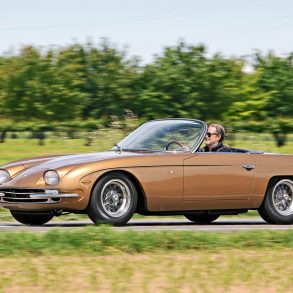
Lamborghini 350 GTS
Years: 1964 (Concept)
Engine: 3.5 L Nat Aspirated V12
Power: 320 bhp @ 6,500 rpm
Torque: 276 lb-ft @ 4,500 rpm
0-60 mph: 7.4 seconds
Top Speed: 155 mph
Building on the 350 GT which was launched in 1964, Lamborghini then had two roadster variants made up by Carrozzeria Touring for show duty. Unfortunately Lamborghini never went into production of a roadster.
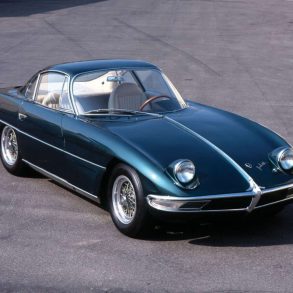
Lamborghini 350 GTV
Years: 1963 (Concept)
Engine: 3.5 L Nat Aspirated V12
Power: 360 bhp @ 8,000 rpm
Torque: 240 lb-ft @ 6,000 rpm
0-60 mph: N/A
Top Speed: 174 mph
At the 1963 Turin Auto Show, the 350 GTV showed Lamborghini could create cars (it made tractors before that). The GTV had a striking new body design by Franco Scaglione. The prototype that started it all.
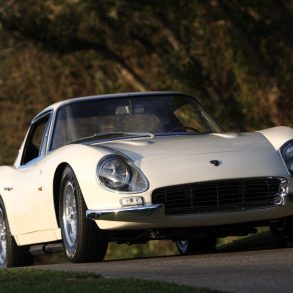
Lamborghini 3500 GTZ
Years: 1965 (Concept)
Engine: 3.5 L Nat Aspirated V12
Power: 320 hp @ 6,500 rpm
Torque: 277 lb-ft @ 4,500 rpm
0-60 mph: N/A
Top Speed: 161.6 mph
A single chassis was sent Zagato of Milan for a entirely new body designed by Ercole Spada. This special car was built on chassis number 0310 which first appeared at the 1965 London motor show. A showstopper at the time.
The V12's power and the glorious exhaust note are addictive. We need more of this...
Car Magazine


